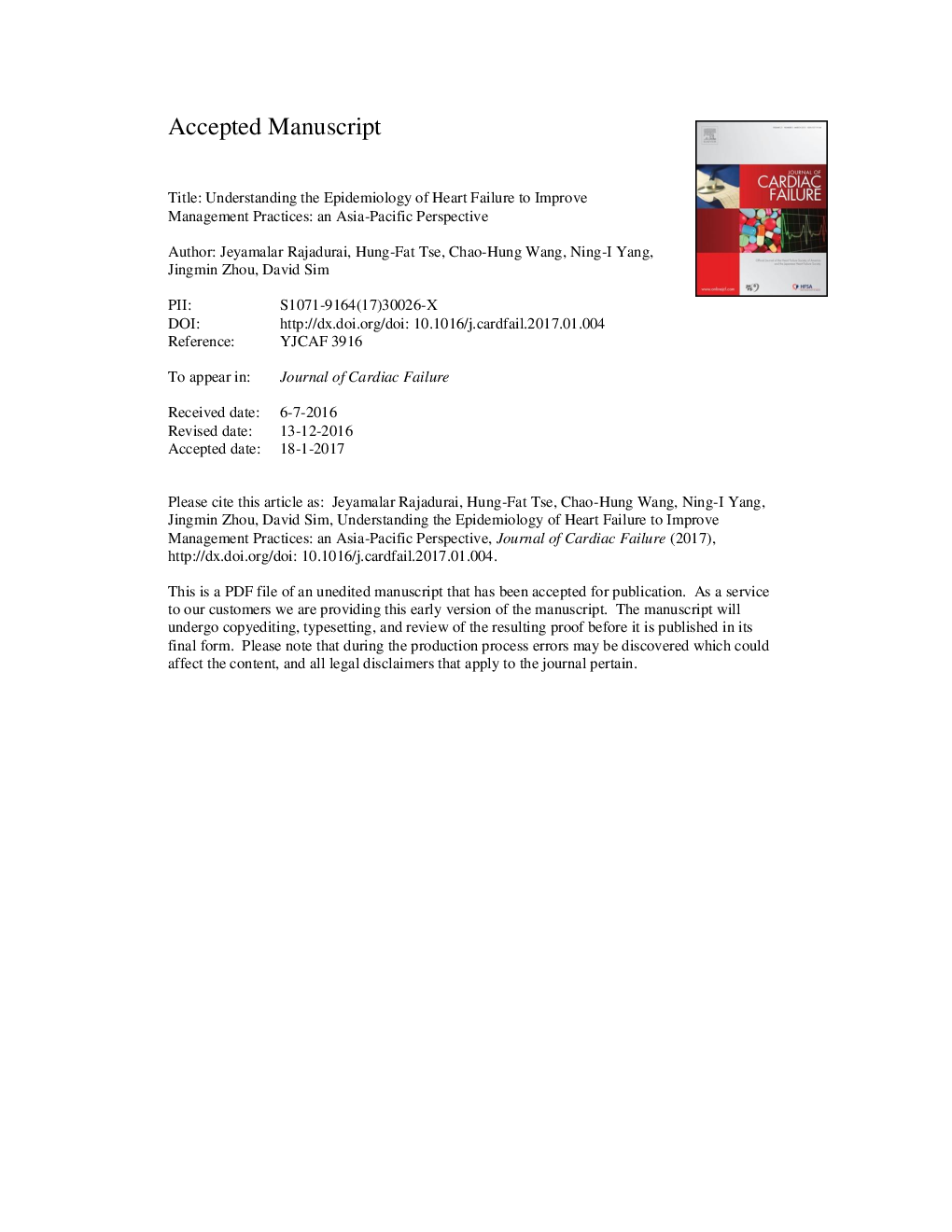| Article ID | Journal | Published Year | Pages | File Type |
|---|---|---|---|---|
| 5614078 | Journal of Cardiac Failure | 2017 | 41 Pages |
Abstract
Heart failure (HF) is a major global healthcare problem with an estimated prevalence of approximately 26 million. In Asia-Pacific regions, HF is associated with a significant socioeconomic burden and high rates of hospital admission. Epidemiological data that could help to improve management approaches to address this burden in Asia-Pacific regions are limited, but suggest patients with HF in the Asia-Pacific are younger and have more severe signs and symptoms of HF than those of Western countries. However, local guidelines are based largely on the European Society of Cardiology and American College of Cardiology Foundation/American Heart Association guidelines, which draw their evidence from studies where Western patients form the major demographic and patients from the Asia-Pacific region are underrepresented. Furthermore, regional differences in treatment practices likely affect patient outcomes. In the following review, we examine epidemiological data from existing regional registries, which indicate that these patients represent a distinct subpopulation of patients with HF. In addition, we highlight that patients with HF are under-treated in the region despite the existence of local guidelines. Finally, we provide suggestions on how data can be enriched throughout the region, which may positively affect local guidelines and improve management practices.
Related Topics
Health Sciences
Medicine and Dentistry
Cardiology and Cardiovascular Medicine
Authors
Jeyamalar MBBS, Hung-Fat MBBS, MD, PhD, Chao-Hung MD, PhD, Ning-I MBChB, Jingmin MD, David MBBS,
